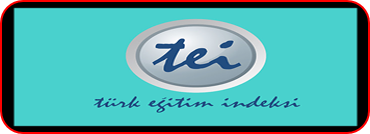ANY PARTICULAR TIME AND TEMPERATURE RANGES IN BREASTFEEDING IN VITAMIN A, E AND Β-CAROTENE LEVELS DETERMINATION
Öz
Human milk is
widely accepted as optimal for human infants nutrition. Human milk, which
contains compound benefical to infants is often expressed and stored before
use. Changes in its antioxidant activity with storage have not been studied.
Breastfeeding
and human milk are widely accepted as optimal for human infants nutrition.
Nowadays lifestyle often makes it difficult to maintain or even initiate human
lactation. This stuation is mostly related to the workload of women away from
home. Human breast milk storage for differed use is on possibility.
At the
determined time period vitamin A, E and β-carotene values show differences at
+4 °C and -20°C at the same time for each group. Seen
that vitamin A, E and β-carotene contents of milk examples hold at –20 °C is more preservative than the milk hold
at +4 °C. β-carotene values
determined at +4 °C for I, II and III
groups accordingly 8.61, 5.92 and 4.32 µg/dl but for IV, V and VI groups at -20
°C this values found
accordingly 8.21, 7.42 and 5.33 µg/dl. b-carotene values of control group is 9.65 µg/dl but our investigations
show that this amount has been more preserved in V and VI groups than II and
III groups. Also vitamin E value at the same groups and at the +4 °C accordingly are, 51.34, 46.65 and 42.85
µg/dl, at the –20 °C accordingly 50.88,
47.64 and 44.73 µg/dl. Vitamin E values again at the same groups accordingly at
the +4 °C 26.12, 22.56 and 1
accordingly 8.20 µg/dl and at the –20 °C 25.98, 23.34 and 20.37 µg/dl. Storage of human milk is safe at 4 oC for 4 hours, whereas at -20 oC it
is saf e for 7 days.
Anahtar Kelimeler
Kaynakça
- 1. Barua S., Tarannum S., Nahar L., Mohiduzzaman M., Retinol and alpha-tocopherol content in breast milk of Bangladeshi mothers under low socio-economic status. Int J Food Sci Nutr, 48: 13-18, (1997).
- 2. Okolosn., . DJ., Costanza A, Blackwell W., Glew RH., Antioxidant content of the milk of Nigerian women and the sera of their exclusively breast-fed infants, Nutr Res, 21: 121-28, (2001).
- 3. Zheng W., Blot WJ., Diamond EL., et al., Serum micronutrients and the subsequent risk of oral and pharyngeal cancer, Cancer Res, 53: 795-798, (1993).
- 4. Gossage CP., Deyhim M., Yamini S., Douglass LW., and Moser-Veillon PB., Carotenoid composition of human milk during the first month postpartum and the response to β-carotene supplementation, Am J Clin Nutr, 76: 193-7, (2002).
- 5. Canfield LM., Giuliano AR., Neilson EM., Blashil BM., Graver EJ., and Yap HH., Knetics of the response of milk and serum β-carotene to daily β-carotene supplementation in healthy, lactating women, Am J Clin Nutr, 67: 276-83, (1998).
- 6. Costantino J.P., Kuller L.H., Begg L., Redmond C.K., Bates M.W.: Serum level changes after administration of a pharmacologic dose of β-carotene. Am J Clin Nutr 19988:1277-83.
- 7. Hamosh M, Ellis L.A, Pollock D.R, Henderson T.R; Hamosh P.:Breastfeeding and the Working Mother: Effect of Time and Temperature of Short-term Storage on Proteolysis, lipolysis, and Bacterial growth in Milk. Pediatrics, vol 97;4 1996.
- 8. Bates C.J., Prentice A.: Breast milk as a source of vitamins, essential minerals and trace elements. Pharmacology & Therapeutics, 62:1-2 ;1994, 193-220.
- 9. VanderJagt D.J., Okolo S.N., Costanza A., Blacwell W., Glew R.H.: Antioxidant content of the milk of Nigerian women and the sera of thir exclusively breast-fed infants. Nutrition Resarch 21,2001, 121-128.
- 10. Jason JM, Nieburg P, Marks JS, M ortality and infectious disease associated with infant feeding practices in developing coumtries. Pediatrics. 1984;74:702-727.
- 11. Vidal Valverde C., Ruiz R.: effects of Frozen other storge Conditions on α-Tocopherol Content of Cow milk. J dairy Sci 76:1520-1525 1993.
- 12. Ford J.E., Porter J.W.G., Thompson S.Y., Toothill J., Edwards Webb J., Effects of ultra-high temperature (UHT) processing and a subsequent strage on the vitamin content of milk. J. Dairy Res. 447:454, 1969.
- 13. Diber C. Pottier J. Larondelle G.Y.: Present knowledge and unexpected behaviours of vitamins A and E in colostrum and milk. Livestock Production Science, 98, (1-2): 2005, 135- 147.
- 14. Clarkson, M., Thompson H.S., Antioxidants, What Role do They Play in Physical Activity and Health? Am J Clin Nutr. 72: 637-464, (2000).
- 15. Renner, E., Storage stability and some nutritional asppects of milk powders and ultra high temperature products of at high ambient temperatures. J. Dairy Res. 125: 142, 1988.
- 16. Barger J., Bull P.: A comparison of the bacterial composition of breast milk stored at room temperature and stored in the refrigerator. Int J Childbirth Educ. 1987; 2:29-30.
- 17. Suzuki JI., Katoh NA., Simple and Cheap Methods for Measuring Serum Vitamin A in Cattle only a Spectrophotometer. Jpn J Vet Sci, 52 (6): 1281-1283, (1990).
- 18. Kayden HJ., Chow CK., and Bjornson, LK., Spectrophotometric Method for Determination of Tocopherol in Red Blood Cells. J. Lipid. Res. 14: 533, (1973).
- 19. Kiermer F., Freisfeld I., Zur Kenntnis des Neuraminsaüre-gehaltes in Kuhmich.Veranderungen des Neuramin Saure-gehaltes der Milch Durch Biologische Einflüsse, Org Ges Leb Wis, 128: 267-277, (1966).
- 20. Gossage C.P., Deyhim M., Yamini S., Douglass L.W., Moster Veillon Phylis.: carotenoid composition of human milk during the first month postpartum and the response to β-carotene supplementation. Am J Clin Nutr2002;76 193-7.
- 21. Romeu Nadal M, Morera Pons S, Castellote A.I, López Sabater M.C.: Rapid high-performance liquid chromatographic method for Vitamin C determination in human milk versus an enzymatic method. Journal of Chromatography B, 830 (2006) 41-46.
- 22. Pittard WB Bill K: Human milk banking. Effect of refrigeration on cellular components. Clin Pediatr, 1981; 20:31-33. 23. Hulshof PJM., Roekel-Jansen T., Bovenkamp P., West CE., Variation in retinol and carotenoid content of milk and milk products in the Netherlands, J Food Comp and Anal, 19: 67-75, (2006).
- 24. Walsh J.A, Warren K.S. Selective primary health care. An interim strategy for disease control in developing countries. N Engl/Med. 1979; 301;967-974.
- 25. Piironen V., Varo P., Koivistoinen P., Stability of tocopherols during storage of foods. J Food Comp and Anal, 1: 124-129, (1988).
- 26. Vidal-Valverde C., Ruiz R., Medrano A., Effects of frozen and other storage conditions on α-tocopherol content of cow milk. J Dairy Sci, 76: 1520-1525, (1993).
Öz
Kaynakça
- 1. Barua S., Tarannum S., Nahar L., Mohiduzzaman M., Retinol and alpha-tocopherol content in breast milk of Bangladeshi mothers under low socio-economic status. Int J Food Sci Nutr, 48: 13-18, (1997).
- 2. Okolosn., . DJ., Costanza A, Blackwell W., Glew RH., Antioxidant content of the milk of Nigerian women and the sera of their exclusively breast-fed infants, Nutr Res, 21: 121-28, (2001).
- 3. Zheng W., Blot WJ., Diamond EL., et al., Serum micronutrients and the subsequent risk of oral and pharyngeal cancer, Cancer Res, 53: 795-798, (1993).
- 4. Gossage CP., Deyhim M., Yamini S., Douglass LW., and Moser-Veillon PB., Carotenoid composition of human milk during the first month postpartum and the response to β-carotene supplementation, Am J Clin Nutr, 76: 193-7, (2002).
- 5. Canfield LM., Giuliano AR., Neilson EM., Blashil BM., Graver EJ., and Yap HH., Knetics of the response of milk and serum β-carotene to daily β-carotene supplementation in healthy, lactating women, Am J Clin Nutr, 67: 276-83, (1998).
- 6. Costantino J.P., Kuller L.H., Begg L., Redmond C.K., Bates M.W.: Serum level changes after administration of a pharmacologic dose of β-carotene. Am J Clin Nutr 19988:1277-83.
- 7. Hamosh M, Ellis L.A, Pollock D.R, Henderson T.R; Hamosh P.:Breastfeeding and the Working Mother: Effect of Time and Temperature of Short-term Storage on Proteolysis, lipolysis, and Bacterial growth in Milk. Pediatrics, vol 97;4 1996.
- 8. Bates C.J., Prentice A.: Breast milk as a source of vitamins, essential minerals and trace elements. Pharmacology & Therapeutics, 62:1-2 ;1994, 193-220.
- 9. VanderJagt D.J., Okolo S.N., Costanza A., Blacwell W., Glew R.H.: Antioxidant content of the milk of Nigerian women and the sera of thir exclusively breast-fed infants. Nutrition Resarch 21,2001, 121-128.
- 10. Jason JM, Nieburg P, Marks JS, M ortality and infectious disease associated with infant feeding practices in developing coumtries. Pediatrics. 1984;74:702-727.
- 11. Vidal Valverde C., Ruiz R.: effects of Frozen other storge Conditions on α-Tocopherol Content of Cow milk. J dairy Sci 76:1520-1525 1993.
- 12. Ford J.E., Porter J.W.G., Thompson S.Y., Toothill J., Edwards Webb J., Effects of ultra-high temperature (UHT) processing and a subsequent strage on the vitamin content of milk. J. Dairy Res. 447:454, 1969.
- 13. Diber C. Pottier J. Larondelle G.Y.: Present knowledge and unexpected behaviours of vitamins A and E in colostrum and milk. Livestock Production Science, 98, (1-2): 2005, 135- 147.
- 14. Clarkson, M., Thompson H.S., Antioxidants, What Role do They Play in Physical Activity and Health? Am J Clin Nutr. 72: 637-464, (2000).
- 15. Renner, E., Storage stability and some nutritional asppects of milk powders and ultra high temperature products of at high ambient temperatures. J. Dairy Res. 125: 142, 1988.
- 16. Barger J., Bull P.: A comparison of the bacterial composition of breast milk stored at room temperature and stored in the refrigerator. Int J Childbirth Educ. 1987; 2:29-30.
- 17. Suzuki JI., Katoh NA., Simple and Cheap Methods for Measuring Serum Vitamin A in Cattle only a Spectrophotometer. Jpn J Vet Sci, 52 (6): 1281-1283, (1990).
- 18. Kayden HJ., Chow CK., and Bjornson, LK., Spectrophotometric Method for Determination of Tocopherol in Red Blood Cells. J. Lipid. Res. 14: 533, (1973).
- 19. Kiermer F., Freisfeld I., Zur Kenntnis des Neuraminsaüre-gehaltes in Kuhmich.Veranderungen des Neuramin Saure-gehaltes der Milch Durch Biologische Einflüsse, Org Ges Leb Wis, 128: 267-277, (1966).
- 20. Gossage C.P., Deyhim M., Yamini S., Douglass L.W., Moster Veillon Phylis.: carotenoid composition of human milk during the first month postpartum and the response to β-carotene supplementation. Am J Clin Nutr2002;76 193-7.
- 21. Romeu Nadal M, Morera Pons S, Castellote A.I, López Sabater M.C.: Rapid high-performance liquid chromatographic method for Vitamin C determination in human milk versus an enzymatic method. Journal of Chromatography B, 830 (2006) 41-46.
- 22. Pittard WB Bill K: Human milk banking. Effect of refrigeration on cellular components. Clin Pediatr, 1981; 20:31-33. 23. Hulshof PJM., Roekel-Jansen T., Bovenkamp P., West CE., Variation in retinol and carotenoid content of milk and milk products in the Netherlands, J Food Comp and Anal, 19: 67-75, (2006).
- 24. Walsh J.A, Warren K.S. Selective primary health care. An interim strategy for disease control in developing countries. N Engl/Med. 1979; 301;967-974.
- 25. Piironen V., Varo P., Koivistoinen P., Stability of tocopherols during storage of foods. J Food Comp and Anal, 1: 124-129, (1988).
- 26. Vidal-Valverde C., Ruiz R., Medrano A., Effects of frozen and other storage conditions on α-tocopherol content of cow milk. J Dairy Sci, 76: 1520-1525, (1993).
Ayrıntılar
| Bölüm | Makaleler |
|---|---|
| Yazarlar | |
| Yayımlanma Tarihi | 31 Aralık 2015 |
| Gönderilme Tarihi | 13 Mayıs 2015 |
| Kabul Tarihi | 22 Haziran 2018 |
| Yayımlandığı Sayı | Yıl 2015 Cilt: 2 Sayı: 1 |








